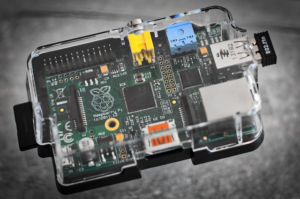
CentOS 7’s official end of life is June 30th, 2024. What should a DevOps team do? Here are your choices.
Back in December 2020, Red Hat, CentOS‘s Linux parent company, announced it was “shifting focus from CentOS Linux, the rebuild of Red Hat Enterprise Linux (RHEL), to CentOS Stream, which tracks just ahead of a current RHEL release.” CentOS users were upset, and many never stopped using the last supported version of “classic” CentOS, CentOS 7.
Just how popular is CentOS 7? According to LanSweeper, an IT asset management company, 26% of the 200,000 Linux devices they scanned run CentOS. According to Web Technology Servers’ count, CentOS is still used by 2.4% of all websites.
Why have so many stayed loyal to a dying operating system? For years, CentOS was the default choice of web hosting companies. The Linux distribution was fast, free, and reliable. Sure, if you needed top-notch tech support, RHEL was the operating system of choice in the Red Hat Linux family. But not everyone needs handholding. If you could manage a Red Hat Linux variant without tech support, especially for the express purpose of web serving and related server applications in the Linux, Apache, MySQL, PHP/Python/Perl (LAMP) family, CentOS was all you needed. And DevOps, like anyone else, are happy to operate on the “If it ain’t broke, don’t fix it” sentiment.
Now, however, it’s time to change. “Operating on a deprecated version of CentOS poses several significant risks,” said Esben Dochy, Lansweeper’s senior technical product evangelist. “Without continued support, these systems will no longer receive critical security updates, leaving them highly vulnerable to cyberattacks. Additionally, compliance with industry regulations and standards will be jeopardized, potentially leading to severe legal and financial consequences. Operational inefficiencies are also a concern, as deprecated systems may face compatibility issues with new software and hardware, causing disruptions and decreased productivity.”
Using a deprecated operating system may be okay for personal needs – but not for DevOps teams responsible for an organization’s infrastructure. If you really, really can’t switch from RHEL 7/CentOS 7, you might consider purchasing RHEL 7 Extended Lifecycle Support.
CentOS Alternatives
So, what can you do? The good news is you have several choices:
Red Hat, of course, hopes you’ll switch to RHEL 8 or RHEL 9. The company tries to make the transition easier using Red Hat’s DevOps tools, such as Red Hat Insights (which comes with RHEL subscriptions), the Red Hat Satellite add-on, and Convert2RHEL to convert multiple systems at the same time. Concert2RHEL can also be used to move from other RHEL-style Linux distros to RHEL. Ansible users can also use this powerful infrastructure as code (IaC) DevOps tool to automate CentOS to RHEL.
For CentOS users who run instances on the major hyperclouds, including AWS, Azure, and Google Cloud, Red Hat offers Red Hat Enterprise Linux for Third-Party Linux Migration. These migration tools are designed to assist users of CentOS 7 in smoothly converting in-place instances to RHEL 7.
Some of you may be asking – with reason: Wait, doesn’t RHEL 7 also reach its end of life on June 30th? Well, yes, sort of, but not really. Red Hat recently announced a new program, Extended Life Cycle Support (ELS) for Red Hat Enterprise Linux 7. Subscribers get a four-year add-on to provide security patches and updates through June 30, 2028.
Or, if you’re bound and determined to stick with CentOS 7, you can choose one of several third-party companies that offer CentOS 7 extended support, with critical updates and security patches beyond the official end-of-life date. These include:
You could also move to CentOS Stream, Red Hat’s RHEL development Linux distro. Stream is a rolling-release Linux distribution, which means it continuously receives updates, including the latest features, bug fixes and security patches.
On the plus side, Stream is free and offers the newest updates. On the other hand, Stream is not designed for production use. As a continuously delivered distribution, it doesn’t have the same level of stability as traditional CentOS or RHEL. It also doesn’t have an upgrade mechanism between major versions, nor does it have commercial support.
From my perspective, Stream is fine for cutting-edge developers but not for business use. Even if you automate managing CentOS as much as possible with DevOps tools, it will be a pain to manage.
You can also switch to a third-party RHEL clone, such as AlmaLinux 8.10 or Rocky Linux 8.10. Both are free to use and work quite well. I use both on my own servers. I’m far from alone. According to statistics collected by the Fedora Extra Packages for Enterprise Linux (EPEL) Special Interest Group, a project that tracks the RHEL Linux family’s use of popular third-party Linux applications, Rocky Linux is now the most popular RHEL-style Linux with close to a million instances running, followed by RHEL and AlmaLinux.
Both AlmaLinux and Rocky Linux offer CentOS 7 migration tools. With Ascender, an open-source Ansible AWX fork, you can also automate the transition from CentOS to Rocky Linux. if you haven’t looked at either yet, it’s high time you did.
You see, the clock has run out. CentOS 7 has been a loyal servant for years, but it’s time to let that servant retire and move on to something new and safer. Yes, you can keep using it with third-party support, but it’s time to move on.







